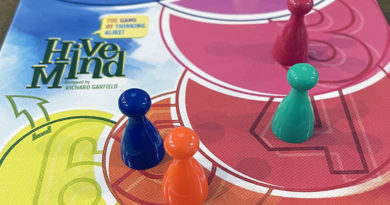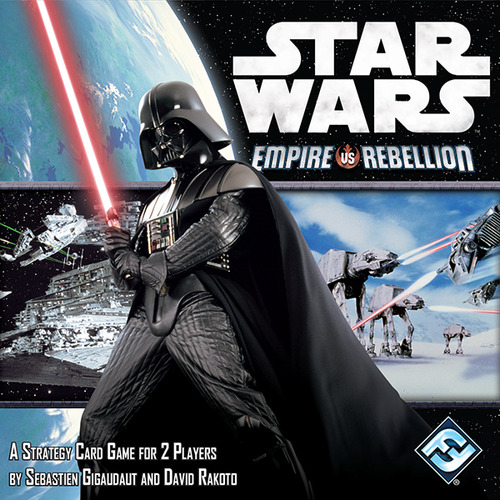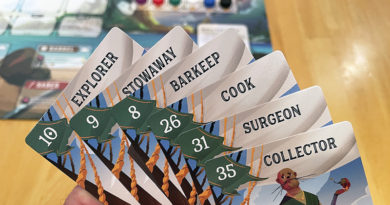Gridopolis Game Review
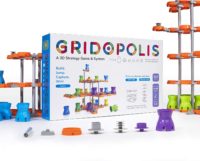
Imagine if Checkers married a building system like Kenex or Tinker Toys, what would their baby look like?
Well, I might have found the answer to that, Gridopolis!
On the front of the rulebook it says Gridopolis is a “3D strategy game and system”. The system part of it comes in the form of a modular playing board called the Grid-Set.
The Grid-Set can be built in any manner of ways before you start playing and may change throughout the course of the game making this a truly unique experience.
How to play Gridopolis
Setup:
To begin, players need to create the Grid-Set. This is the “board” the players will be using through the course of the game.
Players use the provided Pads, Posts, and Connectors to create the “Matrix” board which is included in the rulebook or they can go online to find other variations of the Grid-Set. Players can also make their own creations.
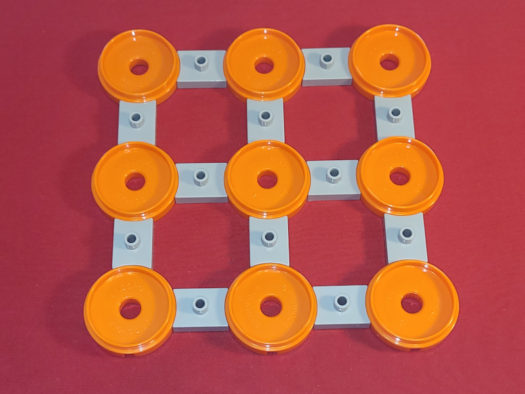
Once the Grid-Set has been created, each player receives 6 player Pawns and 3 Kingerzers in the color of their choice. They also receive 2 Blocker boxes, 2 Posts, 3 Links and 3 Pads which are used later in the game.
Players then place their Kingerzers and pawns on their section of the Grid-Set. And with that, the game is ready to begin.
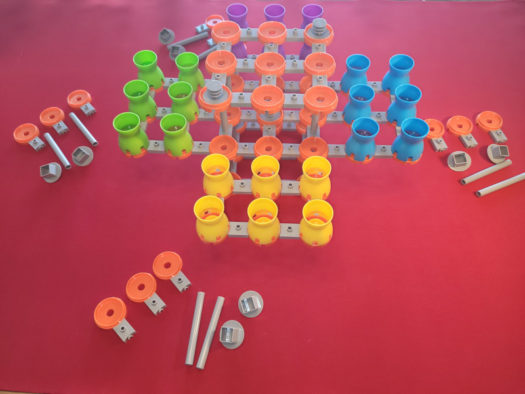
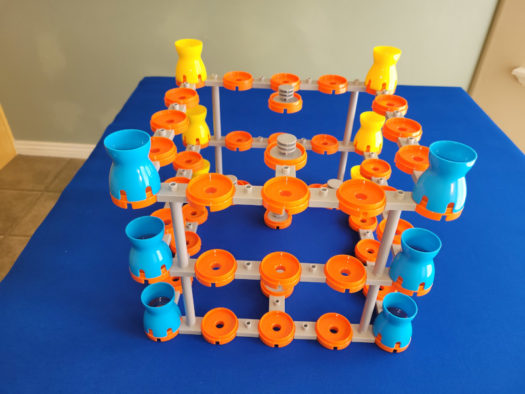
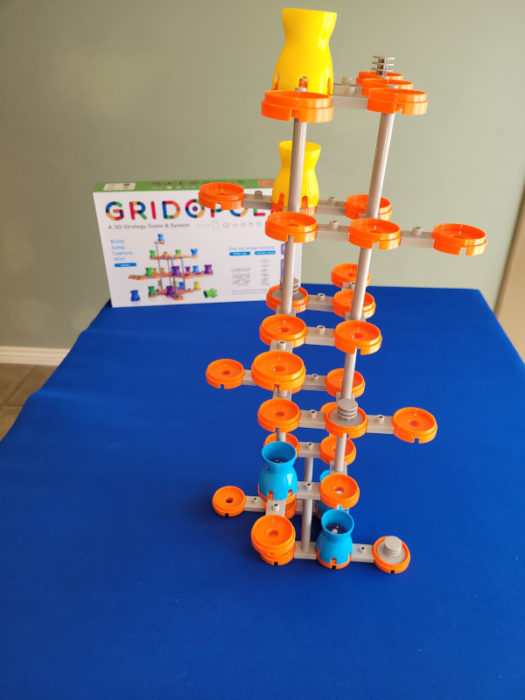
Game Play:
There are 2 main ways to play the game.
- Last man standing. This is exactly like it sounds. The player with the last Pawn/King on the Grid-Set wins.
- Most points wins. In this mode of play, players set a time limit (or number of turns) in which to score the most points they can. Players receive points for the following:
Kings captured – 4 points
Pawns captured – 3 points
Kings you have left – 2 points
Pawns you have left – 1 point
Kamikaze – You score the points for the Pawn/King you captured, but your opponent scores the points for the Pawn/King you used. See more on Kamikazes below.
In either mode of play, on a player’s turn, they can do 1 of the following 3 options – Move, Place a Blocker, or Add a Pad.
- Players can move their own pawns forward 1, up and forward 1, down and forward 1, diagonal 1, or even jump over their own pawn (forward or diagonal). Players may never move their Pawns backwards unless the Pawn has been kinged. At that point, they can move any direction 1 space. Kings can also move twice (2 separate moves).
Kings. When a player reaches a Kingerzer at the opposite side of the board from where they began, their Pawn gets flipped over and becomes a King.
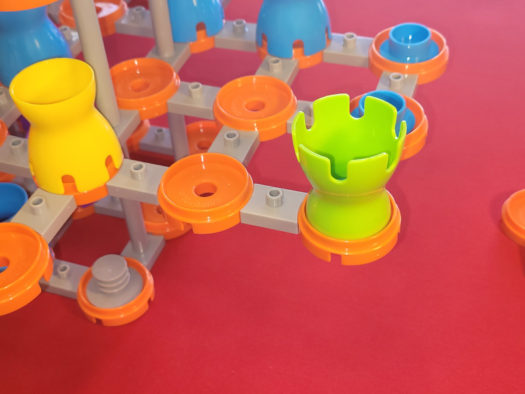
Teleporters. When a player lands on a Teleporter, they can move to any other unoccupied Teleporter in the Grid-Set as part of their move.
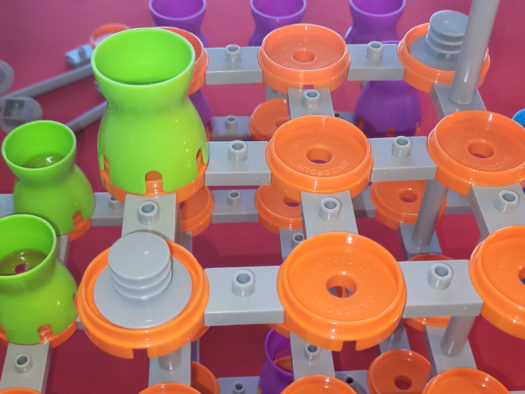
2. A player can use their turn to place a Blocker Box which is used to eliminate one of the Pads for the remainder of the game.
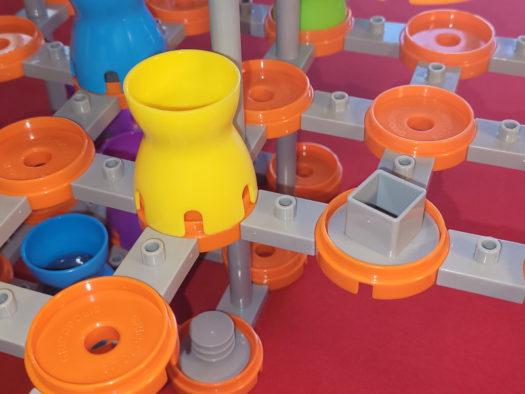
3. Players may also add a Pad to the Grid-Set, as their turn, using the building materials they received as part of the setup. The main rule here is if you’re building vertically, you must build over an existing Pad.
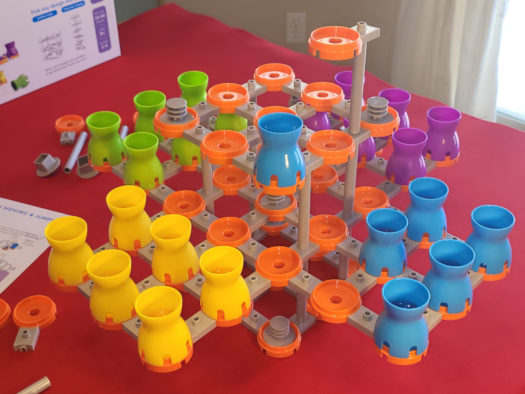
Over the course of the game, players begin to “take” their opponents Pawns and Kings, similar to checkers. To do this, a player jumps over the opposing player’s Pawn/King in a straight line (up, down, straight or diagonal). The opposing player’s Pawn/King is removed from the game and given to the attacking player (if playing for points). Players may also do a multi-jump, taking out multiple Pawns/Kings at once if they can continue jumping their opponent’s pieces in the manner mentioned above.
Players may also perform a Kamikaze move to take another player’s Pawn/King. Typically a player must jump in a straight line to an existing Pad. However a player may choose to jump over an opposing player where there is no pad. When doing so, they take out both their Pawn/King and the opposing player’s Pawn/King.
The game ends when there is a single Pawn/King remaining in the Grid-Set. The owner of that Pawn/King is the winner of the game. If playing a timed match, the player with the most points at the end of the time (or number of turns) wins. See scoring above.
The Breakdown of Gridopolis
When you see the cover for Gridopolis you’re immediately drawn in. It looks like a STEM (Science, Technology, Engineering, and Mathematics) toy that you’d find in a high end toy store. In fact I hope they’re getting this game in those shops, as it would do very well there.
Gridopolis reminds us of two games mashed together; Checkers and Qubic. Most people know checkers, however Qubic may not be well known. It’s an abstract strategy tic-tac-toe style game from 1947. There are 4 levels and the grid size is 4×4. Players not only have to pay attention to the vertical, horizontal, and diagonal win scenarios, they also have to watch out for those scenarios in the 3rd dimension. Gridopolis is much the same in that aspect – players must take into account all directions vertically and horizontally as well as above and below in order to take player’s pieces or avoid getting their’s taken.
It’s also a Mensa Select Award Winner.
Theme and Mechanics:
There is definitely no theme to Gridopolis, it’s a true abstract strategy game which is great for a lot of game enthusiasts. The mechanics are very simple but the 3D board makes you think hard before taking a move.
Flow and accessibility:
If you’ve played checkers, Gridopolis will be somewhat easy to pick up. In fact, all my kids were able to pick up on it pretty quickly. I did have to stress that they could add blockers or build more of the Grid-Set instead of moving every time for their turn. (You kind of forget that’s possible.) There are also times when you have to judge if a move is possible. Moving up or down and taking pieces vertically can take a little getting used to.
The game moves fairly quickly, although just like Checkers and Chess, some players may take their time planning out the best move or moves. That’s easy to remedy with a timer.
Production Value:
I was really impressed with the quality of the components. I believe the publishers of Gridopolis are first-time publishers, but they did a great job finding the right manufacturer for the game.
I have no worries about the parts breaking over time from normal play and can see Gridopolis lasting through many plays. The colors are bright, bold, and playful, which draw the attention of younger and older players alike.
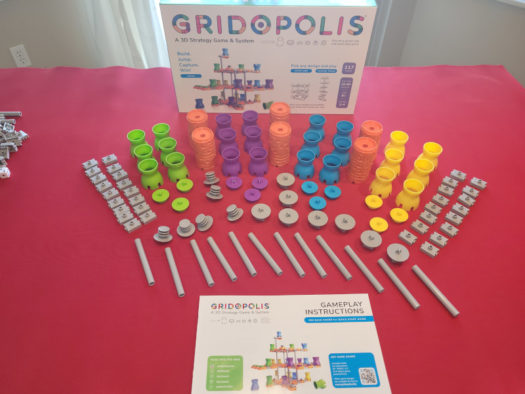
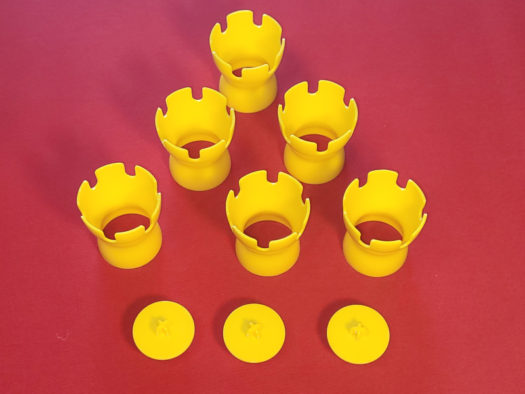
How does Gridopolis score on our “Let’s Play Again” game meter?
I am not a huge fan of Checkers but I do like Cubic so for me Gridopolis gets a mixed rating on the “Let’s Play Again Meter.” While the Checkers play style is not very enjoyable for me, I do really like the 3D aspect of it. My kids like it a lot, so for them Gridopolis ranks high so I’m sure it will see a good amount of play time.
About the Author
Dane is an Advertising and Layout Manager for a national magazine by day and a husband, father of four, and board gamer by night. He has a passion for board games and believes board games help bring families closer together while providing kids a unique way to learn many diverse skills. And he thinks they’re downright fun!!!
The Board Game Family would like to thank Gridopolis Games for a review copy of Gridopolis.



